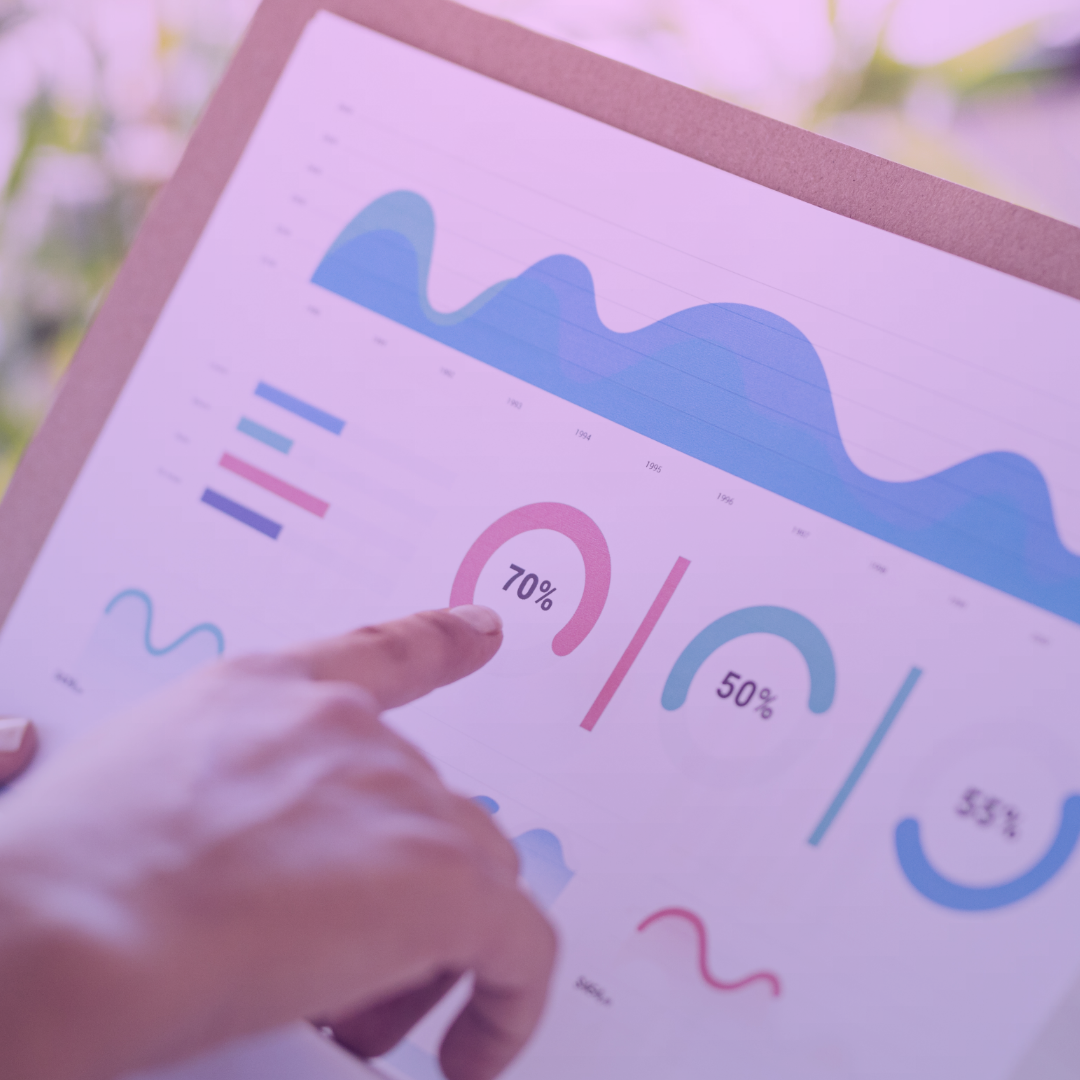
Share
Table of Contents
What is Retail Analytics? Personalization and Customer Segmentation Retail Predictive Analytics for Customer Behavior Optimizing Inventory Management Operational Efficiency and Supply Chain Optimization Pricing and Promotions Store Layout and Visual Merchandising Data Security and Privacy in Retail Analytics The Future of Retail Analytics Wrapping UpRetail Analytics: How Data is Revolutionizing the Retail Industry
Welcome to the dawn of a new era in retail, where the secret to success lies not only in strategic product placement or eye-catching displays but in the realm of data analytics. In this digital age, retailers have discovered a goldmine of information that is transforming the way they do business. By harnessing the power of data analytics, they are uncovering valuable insights, predicting customer preferences, and redefining the shopping experience.
In this blog article, we explore how data is revolutionizing the industry, driving growth, enhancing customer satisfaction, and propelling businesses to new heights. We will explore the innovative ways in which retailers are leveraging data analytics to understand consumer behavior, optimize operations, and stay one step ahead of the competition.
What is Retail Analytics?
Retail analytics is the art of using data to gain a deeper understanding of your retail business. It goes beyond just crunching numbers; it's about unlocking actionable insights from sales figures, customer behavior, inventory levels, and market trends. This empowers retailers to make data-driven decisions that optimize everything from marketing campaigns and product placement to inventory management and supply chain efficiency.
Personalization and Customer Segmentation
Retailers are using data analytics to gain a deeper understanding of their customers. By analyzing customer data, including purchase history, browsing behavior, and demographics, retailers can create personalized experiences tailored to individual customers. Customer segmentation allows retailers to group customers based on their preferences and behaviors, enabling targeted marketing campaigns and personalized product recommendations.


Retail Predictive Analytics for Customer Behavior
Retail predictive analytics is empowering retailers to anticipate customer behavior and preferences. By leveraging historical data, retailers can predict future buying patterns, identify customer churn, and proactively address customer needs. This enables retailers to offer personalized recommendations, send timely promotions, and provide a seamless customer experience.
Optimizing Inventory Management
Retail data analytics is transforming inventory management processes in the retail industry. Retailers can analyze historical sales data, market trends, and other factors to accurately forecast demand and optimize inventory levels. By ensuring the right products are available at the right time and in the right quantity, retailers can reduce stockouts, minimize excess inventory, and improve overall operational efficiency.

Operational Efficiency and Supply Chain Optimization
Demand Forecasting
Effective demand forecasting is crucial for retailers to optimize inventory and reduce costs. By analyzing historical sales data, market trends, and external factors such as weather patterns, retailers can accurately forecast demand and align their inventory levels accordingly. This helps in minimizing stockouts, avoiding overstock situations, and improving supply chain efficiency.


Efficient Supply Chain Management
Retailers are leveraging data analytics to streamline their supply chain operations. Real-time data from various sources, including suppliers, logistics providers, and point-of-sale systems, can be analyzed to identify bottlenecks, optimize routes, and enhance overall supply chain efficiency. This results in faster delivery times, reduced costs, and improved customer satisfaction.
Streamlining Store Operations
Data analytics is transforming how retailers manage their stores. By analyzing data from various sources such as foot traffic, sales transactions, and staffing schedules, retailers can optimize store layouts, improve staffing efficiency, and enhance the overall in-store experience. These insights help retailers make informed decisions to maximize sales and create a pleasant shopping environment for customers.

Pricing and Promotions
Dynamic Pricing Strategies
Retail data analytics enables retailers to implement dynamic pricing strategies that adjust prices in real-time based on various factors such as demand, competition, and customer behavior. By analyzing market trends, competitor pricing, and customer preferences, retailers can optimize their pricing strategies to maximize revenue and profitability. Dynamic pricing also allows retailers to offer personalized discounts and promotions to specific customer segments, driving customer loyalty and satisfaction.


Promotional Campaign Optimization
Retailers invest significant resources in promotional campaigns to attract customers and drive sales. Retail data analytics helps retailers optimize their promotional strategies by analyzing the effectiveness of past campaigns, customer responses, and market trends. By identifying the most effective channels, messaging, and timing for promotions, retailers can allocate their resources efficiently and achieve better results.
Competitive Pricing Intelligence
In a highly competitive retail landscape, staying informed about competitor pricing is crucial. Retail data analytics enables retailers to monitor and analyze competitor prices in real-time, allowing them to adjust their pricing strategies accordingly. By leveraging competitive pricing intelligence, retailers can ensure that their prices remain competitive while maintaining profitability.

Store Layout and Visual Merchandising

Store Layout Optimization
The layout of a retail store plays a significant role in influencing customer behavior and driving sales. Retail data analytics helps retailers analyze customer movement patterns, heat maps, and dwell times to optimize store layouts. By strategically placing products, signage, and displays, retailers can enhance customer engagement, increase product visibility, and improve the overall shopping experience.
Visual Merchandising Analytics
Effective visual merchandising is critical for capturing customer attention and promoting products. Retail data analytics allows retailers to analyze the impact of different visual merchandising techniques, such as product placement, signage, and display designs. By understanding which visual elements resonate with customers, retailers can optimize their visual merchandising strategies to increase customer engagement and sales.


Customer Path Analysis
Understanding customer paths within a store can provide valuable insights into customer behavior and preferences. Retail data analytics enables retailers to analyze customer movement patterns and identify popular areas, high-traffic zones, and potential bottlenecks within the store. This information helps retailers optimize store layouts, improve product placement, and create a seamless shopping experience that encourages customers to explore more and make purchases.
Data Security and Privacy in Retail Analytics
Protecting Customer Data
With the increasing reliance on retail analytics, it is crucial for retailers to prioritize the security and privacy of customer data. Retailers must implement robust data protection measures, including encryption, secure data storage, and strict access controls. By maintaining the trust of their customers and ensuring the confidentiality of their data, retailers can continue to leverage analytics for business growth.


Compliance with Data Regulations
As retail data analytics becomes more prevalent in the retail industry, retailers must also comply with data protection regulations, such as the General Data Protection Regulation (GDPR) and the California Consumer Privacy Act (CCPA). These regulations impose strict requirements on data collection, usage, and consent. Retailers must ensure that their retail analytics practices align with these regulations to avoid penalties and maintain a positive reputation.
The Future of Retail Analytics
AI and Machine Learning Integration
Artificial intelligence (AI) and machine learning (ML) technologies are poised to revolutionize retail analytics even further. These technologies can process vast amounts of data, identify patterns, and make accurate predictions in real-time. AI-powered chatbots and virtual assistants can enhance customer service, while ML algorithms can provide more accurate demand forecasting and personalized recommendations.
Internet of Things (IoT) and Sensor Data
The proliferation of IoT devices and sensors in the retail industry generates massive amounts of data. Retailers can leverage this data to gain insights into customer behavior, optimize inventory management, and improve store operations. By integrating IoT and sensor data with retail analytics, retailers can create smarter, more connected retail environments.
Predictive Analytics for Supply Chain Optimization
Predictive analytics will continue to play a vital role in optimizing supply chain operations. Retailers can leverage real-time data from various sources, including suppliers, logistics providers, and IoT sensors, to predict demand, optimize inventory levels, and streamline the entire supply chain. This results in improved efficiency, reduced costs, and enhanced customer satisfaction.
Wrapping Up
Retail analytics is transforming the retail industry by leveraging the power of data to enhance customer experiences, optimize operations, and drive profitability. From personalized marketing campaigns to efficient supply chain management and data-driven pricing strategies, retailers can make informed decisions that positively impact their bottom line. As technology continues to advance and new data sources emerge, the potential for retail analytics to revolutionize the industry further is limitless. Retailers that embrace data analytics and prioritize data security and privacy will be well-positioned to thrive in the ever-evolving retail landscape. By harnessing the insights derived from retail analytics, retailers can create exceptional shopping experiences, foster customer loyalty, and stay ahead of the competition.
Cloud Destinations is an industry leader with a wide range of expert teams that helps businesses to implement cutting-edge technologies in their core systems and helps them to achieve their business goals. We help you uncover the hidden story behind the numbers and uncover the immense potential data holds for the future of retail. Are you ready to unlock the secrets behind successful retail strategies? Let's begin the retail digital transformation journey together.
Check our website at https://clouddestinations.com for further details, or write to us at info@clouddestinations.com for any query.
Related Posts
United States
2603 Camino Ramon, Bishop Ranch 3, Suite 200, San Ramon, CA 94583, USA
Canada
9850 King George Blvd, 2nd-5th Floor, Surrey, British Columbia, V3T 4Y3, Canada
Malaysia
833A/ 3, Level 28, The Gardens South Tower, Mid Valley City, Lingkaran Syed Putra, 59200, Kuala Lumpur, Malaysia
Coimbatore
Block A2, First Floor, Span Ventures SEZ, Rathinam Tech Zone, Pollachi Main Road, Eachanari, Coimbatore – 641021
Chennai
WorkEZ Urban Square, Kandanchavadi, OMR, Kottivakkam, Rajiv Gandhi Salai, Chennai – 600041

Hyderabad
Workafella, 1st Floor, Western Pearl Building, Hitech City Rd, Opposite HDFC Bank, Kondapur, Hyderabad, Telangana – 500084
 Back
Back













 Linkedin
Linkedin








